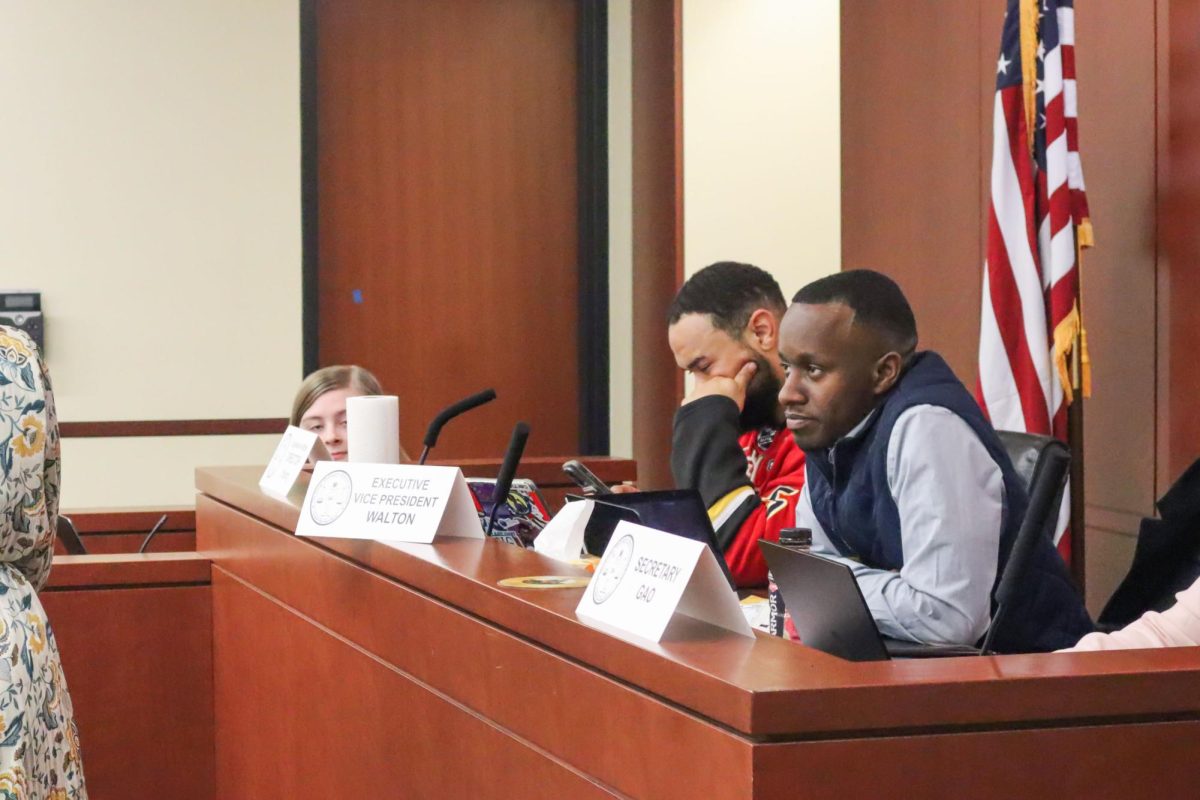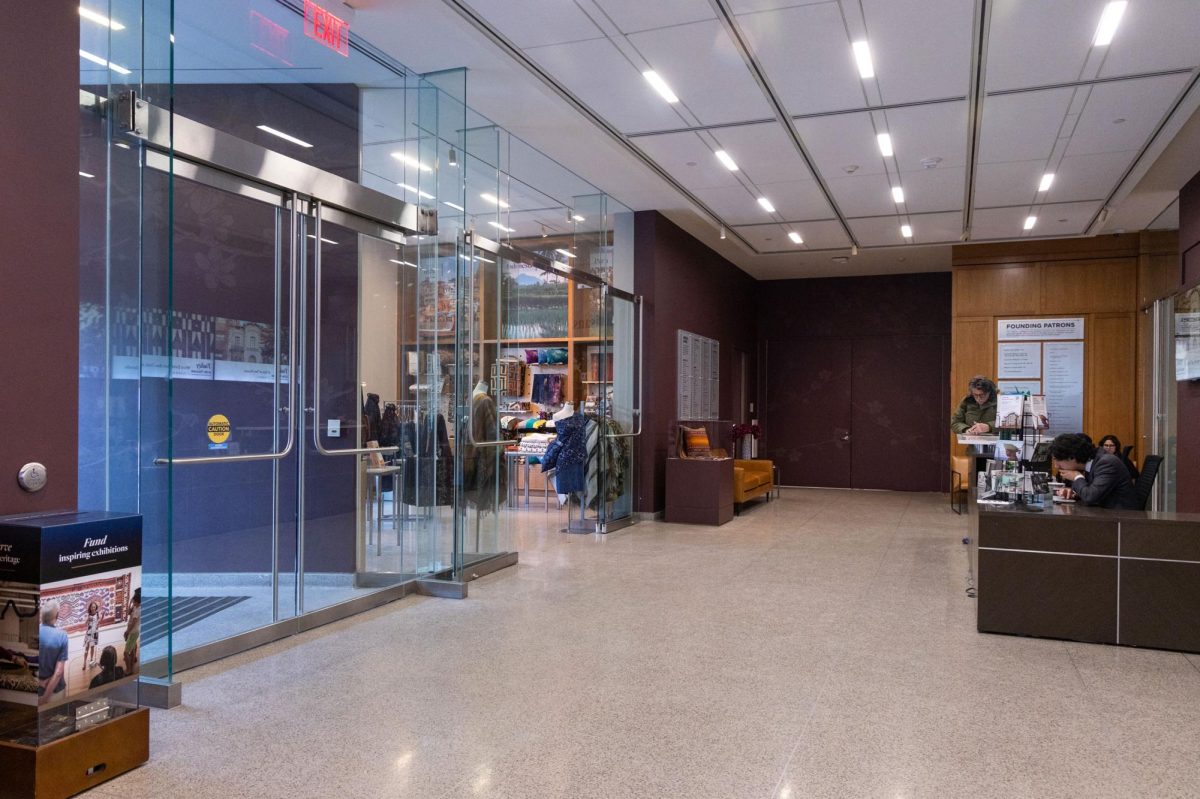When thousands of college students flocked from around the country to GW’s campus in 1970, Lloyd Hartman Elliott became more like a warden than a college president, searching for space for rowdy inmates.
Students with gusto and bell-bottoms settled in Thurston Hall to protest the escalating Vietnam War. Makeshift soup kitchens opened on each floor. A station to hose down protesters burnt by tear gas sat outside.

GW – which Elliott had helped stabilize since becoming its 14th president in 1965 – now saw the safety of its own students at risk.
Elliott, who died of a brain hemorrhage Jan. 1 at age 94, took quick action after midnight meetings with D.C.’s mayor and police chief. He urged for the opening of a boarded-up building across from Thurston Hall, where he could house roving protesters and reduce safety concerns, banning outsiders from residence halls.
“This chaos, this hell that’s let loose on campus, has to end,” Elliott said, according to a history of GW called “From Strength to Strength.” “I want this University to be around when it’s over. We can’t let the bastards win.”
Elliott’s use of sharp words was an anomaly from a man who colleagues remember as soft-spoken and reflective. But his distress illustrated just how threatening the Vietnam protests were to his presidency and to GW itself.
He went on to shape GW’s campus footprint and ushered its academic ascension.
But many said that without his leadership during a riptide of anti-war turmoil – which eventually led to the University’s shutdown in May 1970 –
Timeline:
August 1965
Lloyd Elliott arrived at GW after seven years as president of the University of Maine. He needed to stabilize a university with a flagging $8 million endowment and high administrative turnover.
Spring 1966
The then-School of International and Public Affairs broke away from GW’s school of business and government, authorized by Elliott in one of his first official acts.
January 1967
The Board of Trustees voted, with Elliott’s support, to eliminate the football program after low attendance made the team financially unsustainable.
September 1967
The Jacob Burns Law Library, the first major construction of Elliott’s tenure, opened. Over the next decade, Elliott presided over the completion of the Marvin Center, Gelman Library, Himmelfarb Library, Funger Hall, the Academic Center and the Smith Center.
May 1970
Elliott canceled classes and final exams, shutting down GW as protests against the Vietnam War and the shooting at Kent State University rocked campus and the District.
Fall 1980
Elliott created the new position of “University professor” to help lure more top faculty to the University.
Spring 1986
The University acquired 50 acres of land in Loudoun County, Va., as Elliott executed a plan to open a corporate and technology research campus in suburban Virginia.
GW’s progress would have halted.
“He was the right man for his time,” Elliott’s successor Stephen Joel Trachtenberg said. “Lloyd Elliott handled those pressures in an extraordinary way that I think really tested his mettle. He pulled the University through what could have been a very difficult time and brought it out safe on the other end.”
Elliott made the decision to shut down GW that May with the support of faculty, staff and parents, which was true to his style, said Gail Hanson, who was the dean of students during the 1970s.
“Those were anything but dignified times. Protesters were rude and shouted, but I never saw him lose his cool,” said Hanson, now an administrator at American University. “There were not a lot of people who could muster that kind of restraint or dignity in the face of what he was dealing with.”
The on-campus battle to keep the University afloat was Elliott’s second brush with war. Elliott, who grew up in Clay County, W.Va., enlisted in the U.S. Navy during World War II, serving in North Africa and the Mediterranean.
The experience molded Elliott’s dedication to becoming an educator, his daughter Patricia Kauffman said. After the war, he became a professor of educational administration at Cornell University and then spent seven years as president of the University of Maine.
“When you spend four years in the defense of your country, you pretty quickly decide what is important – where you want to spend your energy,” Kauffman said. “He was about education, about young people and about making opportunities for them.”
A campus development boom
When Elliott arrived on campus in 1965, the flaws in the facilities were glaring. Most noticeably, he recalled in the GW-produced book “The Elliott Years,” the University’s undergraduate, law and medical libraries were crumbling.
Law students would climb to the fourth floor of Stockton Hall to check out books kept inside a metal cage. A tour of the libraries was the “low point” of his presidency, he said in the book, and he quickly sought ways to fortify the University’s Foggy Bottom buildings, even when the endowment was a paltry $8 million.
The University had lost momentum after shuffling through three presidents in five years, piling initiatives onto Elliott’s plate early in his tenure – which had a rocky start because many faculty opposed his appointment, instead supporting an in-house candidate.
In 1965, a fundraising campaign to build a new law library came up nearly $1.3 million short of its $1.5 million goal. So Elliott took a risk.
“I said ‘let’s go ahead and build it,’” Elliott said, according to “The Elliott Years.” “And then, quietly to myself, I thought: whether we ever get it paid for or not remains to be seen, but the campus community has to have some demonstration that we can do something.”
The Jacob Burns Law Library opened in September 1967, the backbone of what would become a top-ranked law school.
But the University needed more money to continue expansion.
The campus development plan the University inked in the early 1960s called for developing GW-owned property for commercial purposes to generate income. Elliott was the first to spring toward the plan, prompting outcry among neighbors as GW engulfed the neighborhood.
“When people say George Washington owns a lot of property, my answer is ‘not enough,’” Elliott remarked in the 1980s, according to The Washington Post.
His strategy set the real estate cushion that supports GW’s finances today and grew the endowment to $200 million under his tenure.
He also encouraged financial pragmatism. With dwindling attendance at football games, Elliott supported the Board of Trustees’ move to eliminate the team in 1967.
The GW of today began to take shape. The University completed the Marvin Center in 1970, despite opposition to naming the first student hub after former GW president Cloyd Heck Marvin, who had delayed the University’s racial integration and made it the last school in the District to do so.
Funger Hall, the Academic Center and the Smith Center – GW’s first on-campus basketball arena – soon followed, and Gelman Library sprung up in 1973.
The campus development boom came without jacking up tuition prices. In 1970, one year of undergraduate tuition was about $2,000, or $11,400 accounting for inflation. In Elliott’s last year in 1988, undergraduate tuition was $8,070, or about $15,000 in today’s dollars.
He compensated by focusing on fundraising, even flying to Iran in 1974 to meet with its shah.
“He was very clever, and he made sure he had people working with him who understood what he was after and could develop programs that would generate financial support for years to come,” Kauffman, his daughter, said. “They were promoting the University and raising money. He did it tirelessly. He did not want the [financial] burden to fall on students.”
Securing a place for international affairs
Elliott’s globetrotting set the pace for the college that would later bear his name and become one of GW’s top schools: the Elliott School of International Affairs.
Now, the school houses the country’s No. 7 master’s program and No. 9 undergraduate program, according to Foreign Policy magazine.
In spring 1966, Elliott’s first year at GW, the school split apart from the then-School of Government, Business and International Affairs, giving it a unique identity and setting the stage for an influx of new faculty, students and resources.
The school still went two decades without a new home, cramming offices and classes into a small building on the corner of 22nd and H streets. In Elliott’s final years, he moved the school into new quarters in Stuart Hall, giving it more autonomy.
Maurice East, who was hired as dean of the school in 1985, said Elliott appeared on a mission to sculpt it into an elite program, giving the school’s students its own advising staff and adding faculty positions.
“They started moving very quickly to fulfill the things I suggested to make the Elliott School bigger and stronger,” East said. “He knew it was getting close [to the end of] his time as president and he wanted to do what he could to put international affairs on the right course.”
When Elliott retired in 1988, the Board of Trustees approved the international affairs school to be branded with his name. Fifteen years later, the school moved into the modern building on E Street where it sits today.
‘A clear image of an American gentleman’
Faculty recalled Elliott as a president who listened.
He favored a bottom-up governance style that waited for consensus before moving forward, resulting in fewer clashes with faculty and neighbors like those that would rile the presidency of his successor, Trachtenberg.
“His number one characteristic was that he spent a lot of time listening to faculty,” said economics professor Anthony Yezer, who started at GW in 1972. “He paid attention to the faculty. If you sent him a memo about something, you got a response.”
He also gave each dean more control over his or her college, which dean East said incentivized progress and showed his faith in those he hired. Instead of hoarding power or flashing his ego, East said Elliott “had a very self-effacing way about him.”
The sense of inclusion would cross over into campus life. Elliott would often challenge faculty and students to games of handball, his favorite sport, and “he usually could beat people half his age,” Hanson, the former dean of students, said.
He also encouraged the growth of small programs. Young-Key Kim-Renaud, chair of the department of East Asian languages and literature, said when she tried to start a Korean studies program at GW in the early 1980s, Elliott lent a hand.
“I was really nobody, and he showed such personal attention so you really wanted to work for him,” Kim-Renaud said. “I always considered him a clear image of an American gentleman. GW was very lucky.”






